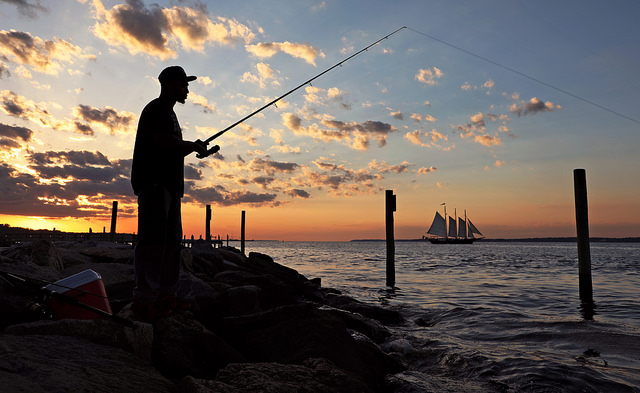Chesapeake Bay Blueprint Progress
Photo by Virginia Sea Grant
A few weeks ago, the Chesapeake Bay Foundation released their Midpoint Assessment – a report that highlights the Chesapeake Bay jurisdictions’ progress to meet their Chesapeake Bay restoration goals. The report shows that while we are seeing improved underwater grasses, crab populations, and a decrease in dead zones, some states are not on track to meet their goals to reduce nitrogen, phosphorus, and sediment pollution.
Photo by Matthew Beziat
The Bay jurisdictions have until 2025 to fully implement the plans necessary to meet the Chesapeake Clean Water Blueprint. This Blueprint set scientific maximums for the amount of sediment, nitrogen, and phosphorus that the Bay can handle during a state of restoration. The Chesapeake Bay Foundation’s report organized the midpoint results by state.
Here are some highlights:
Maryland was successful in achieving its goals for reducing sediment and phosphorus, but not nitrogen. To improve the nitrogen levels, Maryland will need to explore further work in reducing agricultural runoff and septic system pollution. Pennsylvania was far off on reaching their sediment and nitrogen goals due to polluted runoff from agricultural and urban areas. They have much work to do to reach their 2025 goals. Virginia reached their goals in nitrogen and phosphorus, but not sediment and needs to focus on reducing urban and suburban runoff. Delaware was successful in sediment reduction, but struggled with reducing nitrogen from many sources. The District of Columbia was overall very successful, though they still face challenges with reducing urban and suburban runoff. New York has much more work to do to reduce their nitrogen pollution, and West Virginia has achieved almost all of their goals, with the exception of nitrogen from urban and suburban runoff.
For more a more detailed analysis, check out the full report here.
Mary Katherine Sullivan is an intern with the Choose Clean Water Coalition


